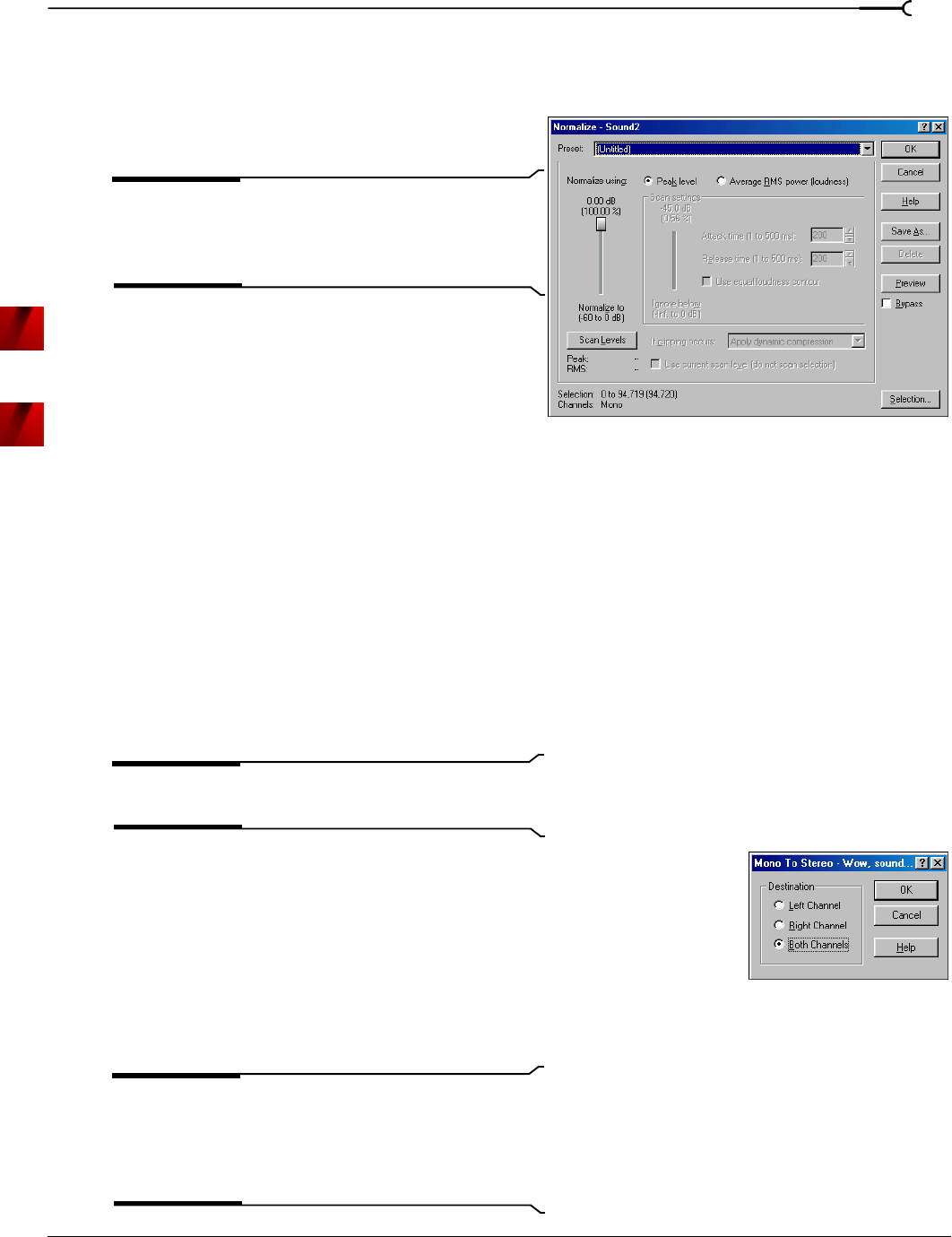
CHP. 6 CHANGING FILE ATTRIBUTES AND FORMATS
87
Normalizing
Normalizing a file prior to decreasing its bit depth ensures that the entire dynamic range is used. In addition,
normalization lowers the signal-to-noise ratio.
1.
From the Process menu, choose Normalize.
The Normalize dialog appears.
Note:
The Normalize dialog pictured here is from
the full version of Sound Forge. If you are using
Screenblast Sound Forge, not all of the controls
pictured here will be available to you.
2.
Select the Peak level radio button.
3.
Set the Normalize to fader to 0 dB (peak) and
click
OK.
Applying compression and normalization
simultaneously
1.
From the Process menu, choose Normalize. The Normalize dialog appears.
2.
Select the Average RMS power radio button.
3.
Specify Apply dynamic compression in the If clipping occurs drop-down list and click OK.
Converting mono/stereo channels
The channels setting indicates whether a file contains one (mono) or two (stereo) channels. Sound Forge
can convert mono files to stereo or stereo files to mono.
Converting from mono to stereo
1.
Open the Voiceover.pca file.
Note:
This file is located in the same folder as the
application.
2.
Right-click the Channels status box and choose Stereo from the shortcut
menu. The Mono To Stereo dialog appears.
3.
Select the Left Channel radio button and click OK. Sound Forge places the
mono data in the upper half of the data window (left channel) and silence in
the right channel.
For more information, see Specifying the audio destination on page 88.
4.
Play the file. “Wow, sound editing just gets easier and easier” plays in only
the left channel.
Tip:
If your sound card supports only mono data, stereo files
can be played by specifying the Sound Mapper as the
playback device. To do this, choose
Preferences from the
Options menu. Click the Wave tab and specify Microsoft
Sound Mapper from the Playback drop-down list.
